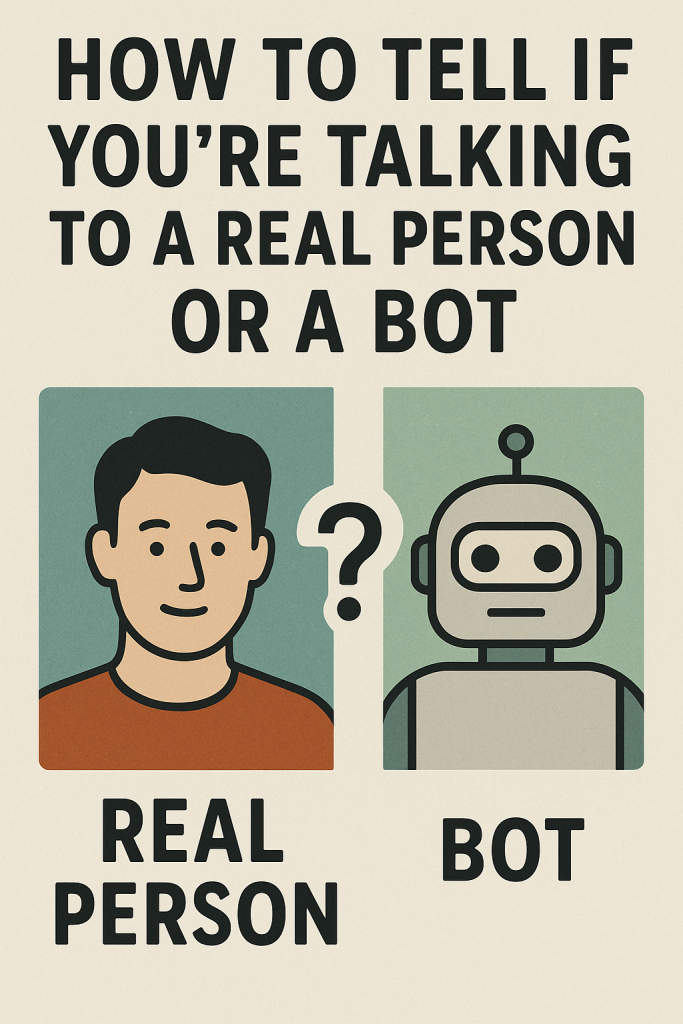Have you ever messaged a company and wondered, “Am I talking to a real person or a robot?” You’re not alone. These days, many businesses use computer programs—called bots—to reply quickly. While this can be helpful, it’s sometimes confusing or frustrating if you just want human help.
Don’t worry! In this guide, we’ll show you a few easy ways to figure out if you’re chatting with a real person or a bot, whether it’s through email or customer support. No tech experience needed—just a little curiosity and a few simple tips.
Table of Contents
🔍 Key Takeaways
- Bots often respond instantly, using generic or overly polite language.
- Real people may take longer to reply and usually answer in a more natural, conversational tone.
- Look out for repeated phrases, poor understanding, or no direct answer to your question.
- You can ask a question only a human can answer—bots often get confused.
- Don’t worry about being fooled. With a few tricks, you’ll feel more in control.
How to Spot a Bot: Simple Signs to Look For
1. Speed and Timing
Bots often reply within a second or two—faster than any human could type. If you send a message and get an instant response, it’s likely a bot.
➡ Tip: Real people usually take a moment to respond, especially if they’re thinking or typing.
2. Tone and Language
Bots often sound too polite or formal, using phrases like:
- “Thank you for reaching out.”
- “We appreciate your inquiry.”
Real people tend to speak more casually:
- “Hi there, let me check on that for you.”
- “Sure, I can help with that.”

3. Do They Understand You?
Bots are programmed to recognize certain keywords. If you ask something unusual, they might give a confusing or off-topic answer.
➡ Example:
You: “Can you tell me if this product comes in blue?”
Bot: “We appreciate your interest. Please visit our website.”
A real person would likely say: “Yes, it’s available in blue—would you like the link?”
4. Repeated Messages
Bots often repeat the same answers or sentences. If you ask twice and get the same word-for-word reply, it’s probably a bot.
5. Try a Human Test
Ask something a bot wouldn’t easily understand, like:
- “What’s your favorite part of the job?”
- “Can you tell me something funny that happened today?”
A real person might respond with something thoughtful or lighthearted. A bot might get confused or ignore the question.
Final Thoughts
It’s completely normal to wonder if you’re talking to a real person these days. Technology can be tricky, but now you have a few easy ways to spot the difference. Trust your instincts—if something feels robotic, it probably is.
The more you practice, the more confident you’ll feel. And remember: it’s always okay to ask for a real person if you need one.
Want to learn more simple tech tips like this? Explore our other friendly guides made just for you.
